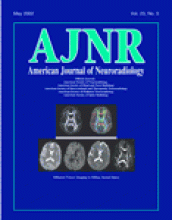Abstract
BACKGROUND AND PURPOSE: The corpus callosum is a heterogeneous white-matter tract that connects the cerebral hemispheres. The purpose of this investigation was to study its microstructural architecture in normal human adult brains by using diffusion tensor imaging (DTI).
METHODS: Two hundred consecutive patients referred for brain MR imaging underwent additional DTI with a high gradient field strength applied in six directions. Forty-two patients met the following inclusion criteria: 1) normal brain and 2) age greater than 18 years. Anisotropy maps were generated, and regions of interest were drawn around specified regions within the corpus callosum. Results were stratified by sex and age. In addition, available histologic specimens of the corpus callosum from cadaver brains were analyzed with conventional and specialized vascular staining.
RESULTS: Anisotropy values in the various regions of the corpus callosum differed significantly. Average values of the anisotropy index for the genu, body, and splenium of the corpus callosum were 0.400, 0.456, and 0.539, respectively. The differences between these values are statistically significant (P < .01). Increased anisotropy was present in posterior areas in both sexes and in all three age groups examined.
CONCLUSION: The results of this investigation show a statistically significant increase in anisotropy of the corpus callosum in its more posterior portions compared with its more anterior portions across sex and age groups. Although the microstructural etiology for this apparent increase in anisotropy is unclear, a number of possible mechanisms are presented.
- Copyright © American Society of Neuroradiology












